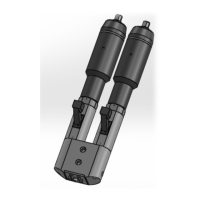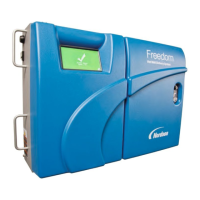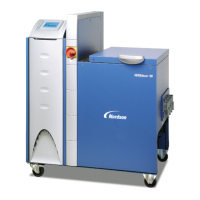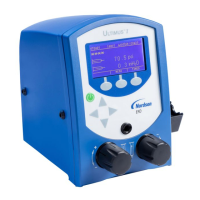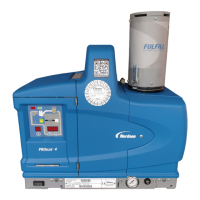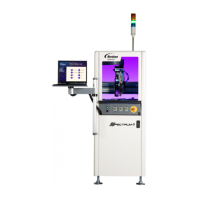Training Guide Course No. 196514
Level 2 Maintenance, X-1000 Series Dispensing Systems 2-124 P/N 196515 (Revision A)
Information Sheet 2-14-2
Part Heaters (Continued)
C. Impingement Heaters
1. Impingement heaters are similar to Contact heaters except that they blow
hot air up at the part rather than use a vacuum to hold the part in place.
2. The determining factor when choosing between Contact and Impingement
heat is the part carrier being used for the application
3.
Heater Operation:
Temperature parameters are setup in FmNT.
FmNT sends the temperature information to the Conveyor/Heater
Controller.
The Conveyor/Heater Controller sends the information directly to the
heaters.
The Conveyor/Heater Controller monitors the temperature from RTD
sensors and reports the information back to FmNT.
4. Blower Operation:
The airflow for the blowers begins at the Main Air Regulator.
From the Main Air Regulator, air flows to the Manual Impingement Air
Shutoff Valve.
From the Manual Impingement Air Shutoff Valve, the air flows through
the Impingement Flow Meters located inside of the lower front cabinet.
From the Impingement Flow Meters, air is supplied directly to the heaters
at a regulated flowrate of up to 4.0 SCFM.
D. Heater Calibration
1. To provide precise heating of the workpiece to the required temperature for
the application of dispensing fluid, the heater must be calibrated.
2. The temperature differential between the programmed temperature value
and the actual temperature of the workpiece must be determined and
entered into the software. An offset must be provided to the software to
ensure accurate heating.
Temperature differentials are due to thermal barriers such as airflow, the
carrier, and the substrate.
Another cause of differentials is RTD (thermocouple) signal inaccuracy.
For instance, at temperatures below 400 °F (204° C) a thermocouple may
be inaccurate by several degrees.
3. The part heaters must be calibrated so that the temperature programmed as
the set point designated in FmNT is the same as that being applied to the
workpiece.

